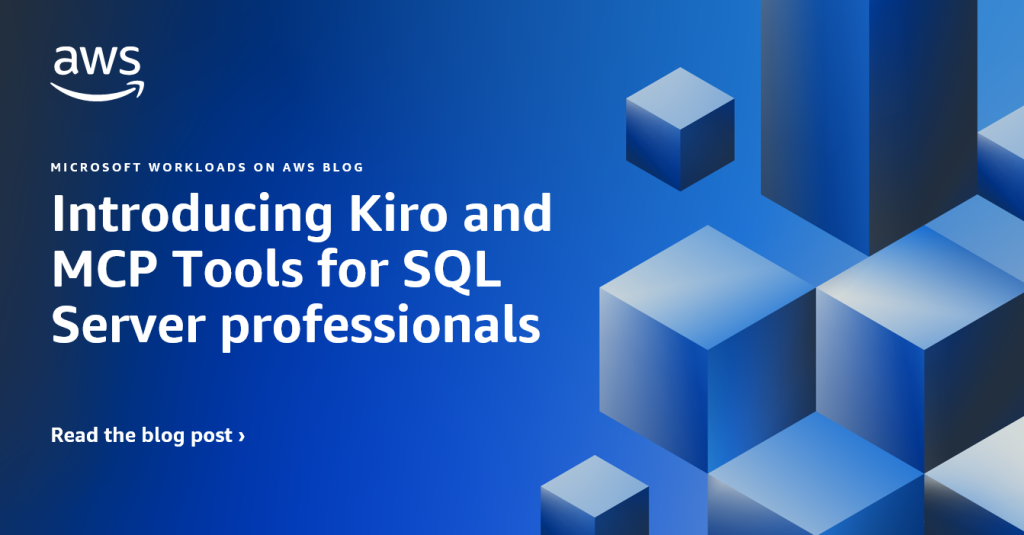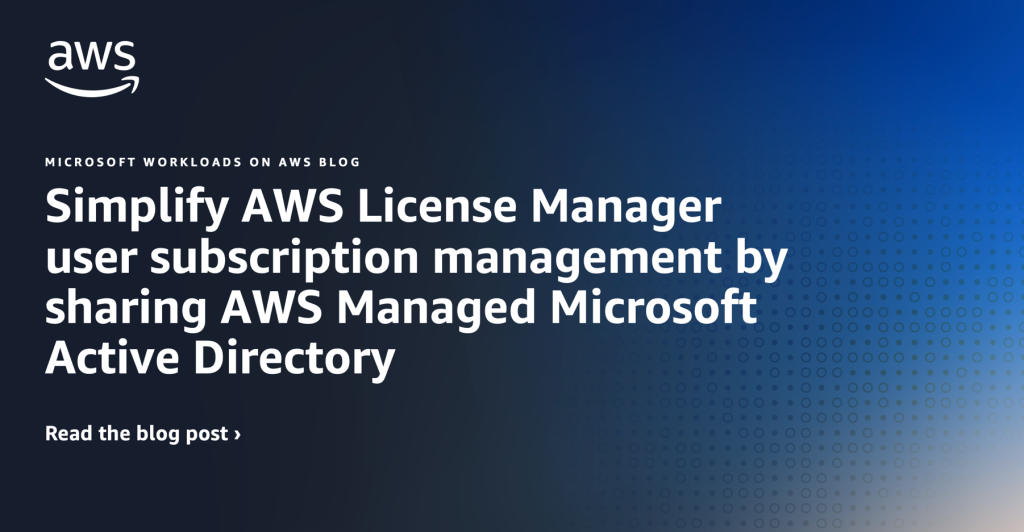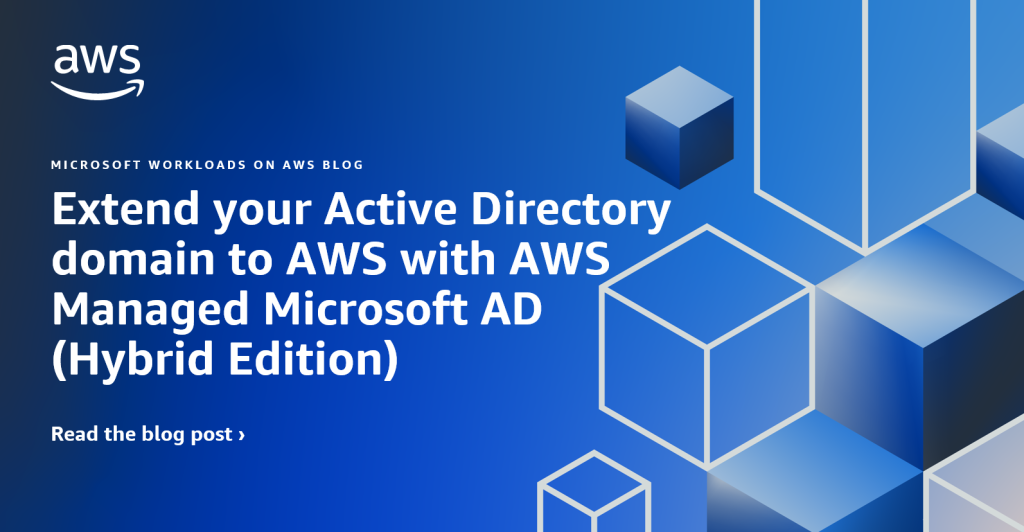Microsoft Workloads on AWS
Category: Technical How-to
Introducing Kiro and MCP Tools for SQL Server professionals
SQL Server professionals manage critical database systems that power enterprise applications, from financial platforms to ecommerce systems. Their responsibilities include optimizing query performance, managing schemas, ensuring high availability, and troubleshooting complex issues. With the advancement of Artificial Intelligence (AI), businesses are redesigning their workflows, enabling AI to independently complete tasks and achieve business goals. Customers […]
Simplify SQL Server Developer edition deployments with AWS Launch Wizard
Microsoft SQL Server Developer edition offers organizations a cost-effective solution for their non-production database workloads on AWS. While many enterprises rely on this edition for development and pre-production testing environments, the traditional deployment process can be cumbersome – requiring manual steps like logging into Amazon Elastic Compute Cloud (Amazon EC2) instances, downloading installation media, and […]
Simplify AWS License Manager user subscription management by sharing AWS Managed Microsoft Active Directory
In this blog, we’re going to show you how AWS License Manager can leverage the directory sharing feature available from AWS Directory Services for AWS Managed Microsoft Active Directory (AWS Managed Microsoft AD) to centrally manage user subscriptions services while using multiple Amazon Web Services (AWS) accounts. AWS License Manager offers you user-based subscriptions for […]
Optimize CPUs best practices for SQL Server workloads – continued
In this blog post, we will extend the analysis of the Optimize CPUs feature provided in a previous publication to other Amazon Elastic Compute Cloud (Amazon EC2) instances suitable for deployment of Microsoft SQL Server workloads on the Amazon Web Services (AWS) Cloud. Amazon EC2 now allows customers to modify an instance’s CPU options to […]
Extending on-premises MS SQL Server Always On Availability groups to Amazon EC2 for Disaster Recovery
This post shows how to implement a hybrid disaster recovery solution by extending your on-premises Microsoft SQL Server Always On Availability Group (AOAG) to SQL Server on Amazon Elastic Compute Cloud (Amazon EC2). Introduction Many Organizations need cloud-based disaster recovery solutions that maintain critical on-premises operations while minimizing costs. This post demonstrates how to extend […]
Extend your Active Directory domain to AWS with AWS Managed Microsoft AD (Hybrid Edition)
Introduction Today, we are announcing the general availability of the Hybrid Edition of AWS Directory Service for Microsoft Active Directory (AWS Managed Microsoft AD). This new edition lets you extend your existing self-managed Active Directory (AD) domain to AWS Managed Microsoft AD while preserving your current identity and access infrastructure. AWS Managed Microsoft AD (Hybrid […]
How TEKsystems Modernized a University’s Microsoft Workloads on AWS
In this blog post, we will describe how TEKsystems Global Services (TGS) worked with a university to modernize their legacy .NET Framework 3.5 applications to .NET 8 based microservices and Microsoft SQL Server (SQL Server) to Amazon Aurora PostgreSQL (Aurora PostgreSQL). TGS is an Amazon Web Services (AWS) premier tier services partner leading digital transformation […]
Operating BYOL Windows Server Workloads Effectively on AWS
One way that customers running Microsoft Workloads on Amazon Web Services (AWS) may reduce costs is taking advantage of Bring Your Own License (BYOL) for eligible licenses they own. In this blog post, we are going to share a few practices to help you optimize your operation of BYOL Windows Server workloads on AWS. Introduction […]
Deploy SQL Server Container Clusters using Amazon EKS and Amazon FSx for Windows
Introduction This blog post shows how to deploy a highly available SQL Server instance in a container using Amazon Elastic Kubernetes Service (Amazon EKS) with persistent storage backed by Amazon FSx for Windows File Server. Running databases and other stateful workloads in containers has grown significantly over the years. According to the CNCF Annual Survey […]
Port your .NET Framework applications to Linux with AWS Transform for .NET
Recently, we announced the general availability of AWS Transform for .NET, the first agentic AI service for modernizing .NET applications at scale. With AWS Transform for .NET, you can accelerate modernization of .NET Framework applications to cross-platform .NET by up to 4x. Since .NET 8 and later are cross-platform, you can run your .NET 8 […]









